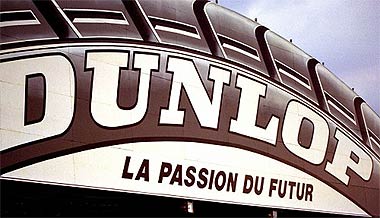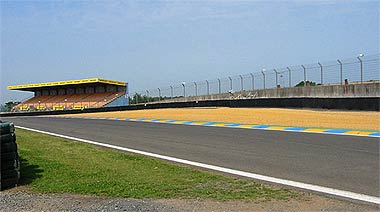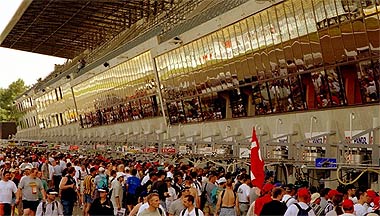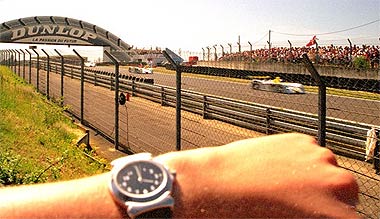About Le Mans
What is Le Mans?
Le Mans is a small town a couple of hundred kilometres South-West from Paris.
The name of the town is associated with the 24 hours motor race which each year since
1923 (except 1936 and 1940-1948) has been held outside the town. A race which since its
beginning has been acknowledged as one of the Worlds most hardest and finest endurance races. Therefore it is on nearly every race drivers list of races he would like to win – even just to finish.

The race is held a short distance outside the town of Le Mans, and 2/3 of the track is
public road which is closed one time a year for this event. The last 1/3 of the track is regular
racetrack, and known as the Bugatti track, used for normal races throughout the year.

As a great deal of the Le Mans track is public road the condition of the track is not in a state
racetracks usually are. Daily truck driving at the roads makes small grooves in the tarmac, and
the white lane dividing stripe is very slippery in the wet. Together with the natural level differences
this track is not useable as a Formula one track, but for sportscar racing it is a classic.
A race weekend:
The race is held second or third weekend in June but prior to the race itself
a lot happens:
At first the cars which is going to compete is selected. This is done by teams
wanting to compete is signing up for the event and mails it to
ACO (Automobile Club de l´Ouest) which arranges the race. ACO chooses an amount
of cars to contend in a time trial in April or May and from this the 56 cars
allowed to start in June is picked.
Monday and Tuesday before the race weekend the chosen cars are gathered
in the centre of Le Mans town. There the organizers approves the cars in a
scrutineering session

At Wednesday and Thursday there are qualifying for the cars. The qualifying
will both dictate the starting positions for the race but is also used to adjust the car
to the track. The qualifying sessions are placed in the late afternoon and early night
so half of the time is driven in daylight and the other half is in the dark. Then the
drivers can adapt to race in both light and dark at the track, and the organizers can
approve each driver as valid for night racing.

Friday is used for resting for drivers. The pit is open for the public and as a
spectator you can come so close to the cars that you nearly can tough them!
Friday afternoon the drivers are presented in the town of Le Mans in a parade where
each team is driven by in an old car. You can come so close to the drivers as you like,
and get both photographs and autographs from them.

Saturday is initiated with a warm-up in the morning. This is done to check the
cars a last time prior to the race. Up to the racestart at 3.00 p.m. there are held
different sorts of support races at the track, so the spectators is warmed up for the race.
Just before racestart the drivers are presented a last time at the start/finish line, and then
the drivers are secured in the cars. At 2.54 p.m. the cars are taken around the track
after a pace-car to be able to do a flying start at 3.00 p.m.
When the start is off there is exact 24 hours of racing before the chequered flag.
Durring the 24 hours each team has to get their car around the 13.8 kilometres track
as many times as possible.

When the time is 3.00 p.m. Sunday afternoon the winner is found: The car which
has covered the longest distance within the 24 hours. Even after 24 hours of racing
it has been close a number of times, so the excitement has been preserved until the last
minutes before the chequered flag drops.
>> Back to Information